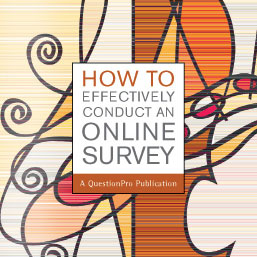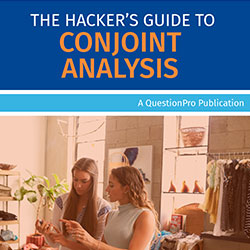Efficient data collection at the American Cancer Society - QuestionPro Case Study
Overview
We had the opportunity to interview Melissa Rittase at the American Cancer Society about her work for the Cancer Prevention Study-3 (CPS-3) cohort. Her position is to help manage the cancer prevention study cohorts, including contributing to survey design, participant communications, data processing, and management, among other study and participant management work. Melissa's primary goal is to be the driver of participant engagement, participant experience, understanding the data coming in, and processing the surveys. This allows her to act as an intermediary between the participants and the researchers analyzing the data.
Goal
Move a significant portion of the CPS-3 to an online participant portal to gather data more frequently in a more timely manner.
The overarching goal of the American Cancer Society as a whole is to free the world from cancer. As part of that, they focus on prevention, survivorship, help guide decisions that impact people's daily lives. To assist with this overarching goal, the ACS has partnered with QuestionPro Communities to supplement the traditional 12-20 page surveys sent every three years with an online participant portal.
The Cancer Prevention Study (CPS)-3 is the cohort of a modern era. The American Cancer Society's Epidemiology Research Program invited men and women between the ages of 30 and 65 who had no personal history of cancer to join this historic research study. The ultimate goal was to enroll at least 300,000 adults from various racial and ethnic backgrounds from across the United States and Puerto Rico. In December 2013, they completed the initial recruitment of CPS-3, with over 304,000 participants.
Process and activation
Currently, every three years, participants of the CPS-3 cohort receive a 12-20 page paper survey or online link that can take up to 45min to complete. With the implementation of a participant portal, the ACS is looking to touch base with participants more often but with shorter surveys and quick feedback opportunities. This empowers ACS to gather insights frequently to make critical decisions with speed and accuracy.
Pilot Project Steps
Using this method, the ACS can test how participants like engaging with their organization once a month (as opposed to every three years) while also testing different platform functionalities.
- At registration: a brief survey on the registration process and initial impressions (5 minutes).
- One month after registration: a brief medical survey (10 minutes)
- Two months after registration: an interactive data collection activity - like a self-administered sit-stand test with a helpful video guide. (10 minutes).
- Three months after registration: send a usability and portal feedback survey (10-15 minutes).
- Four to five months after registration: Use the portal to invite participants to a stool collection project.
- Throughout the pilot: collect information on newly diagnosed cancers, collect updated contact information, and provide study updates to participants.
Future
Over the next few years, participants will be mostly moved online, and a combination of paper and online surveys will continue being used for the large survey conducted every three years.
Download PDF to read more
Survey Software Easy to use and accessible for everyone. Design, send and analyze online surveys.
Research Suite A suite of enterprise-grade research tools for market research professionals.
Customer Experience Experiences change the world. Deliver the best with our CX management software.
Employee Experience Create the best employee experience and act on real-time data from end to end.







